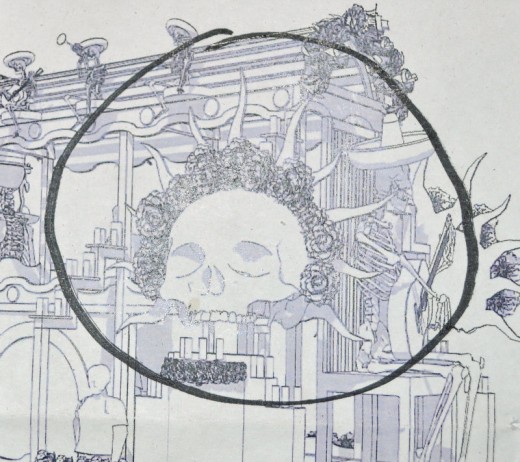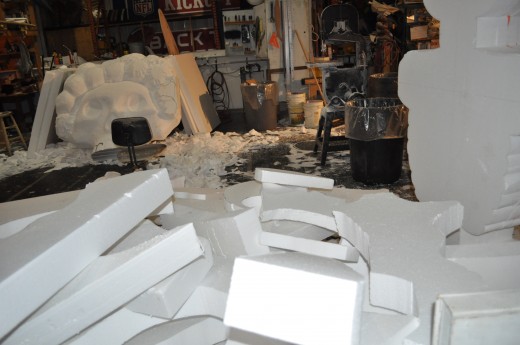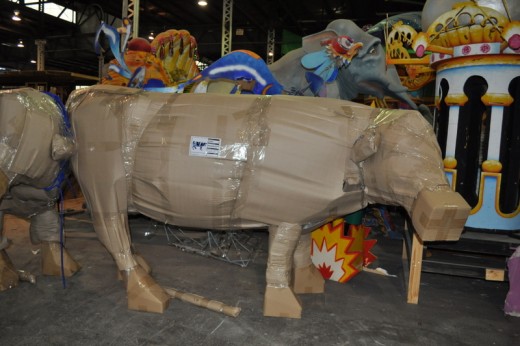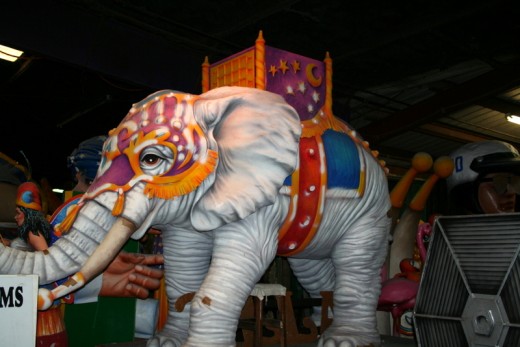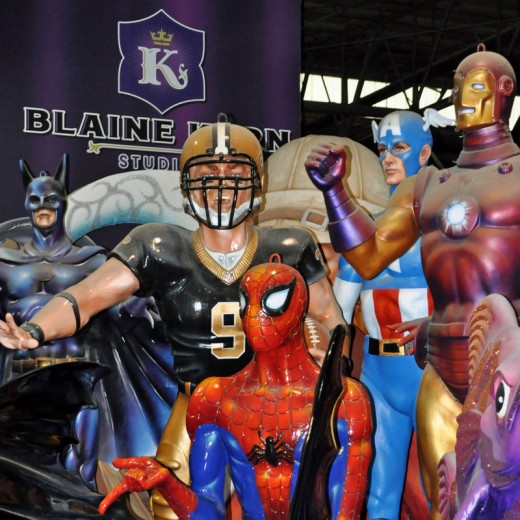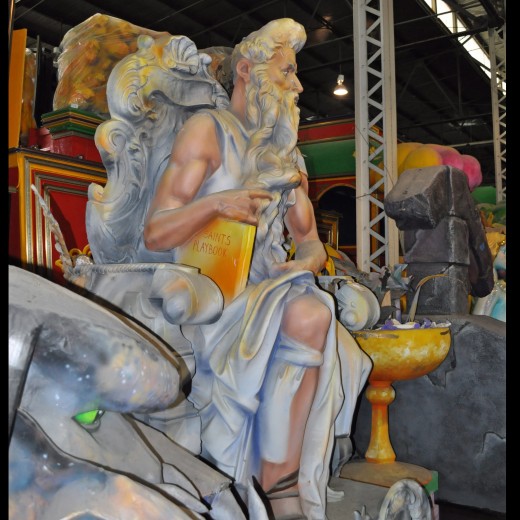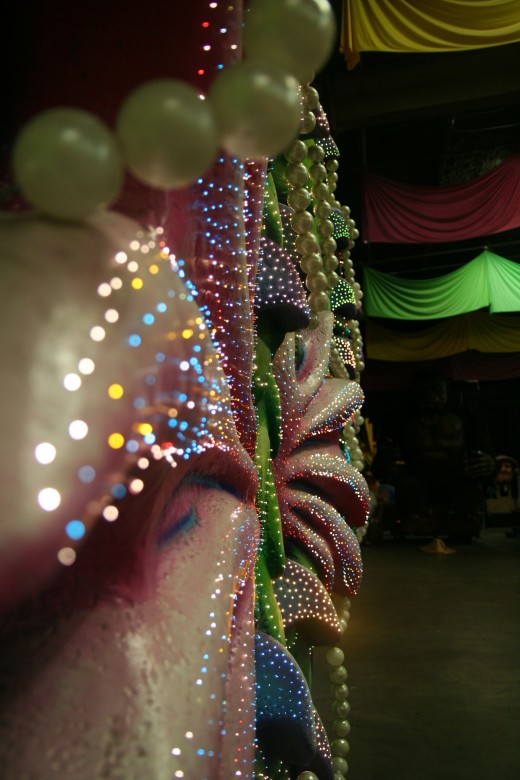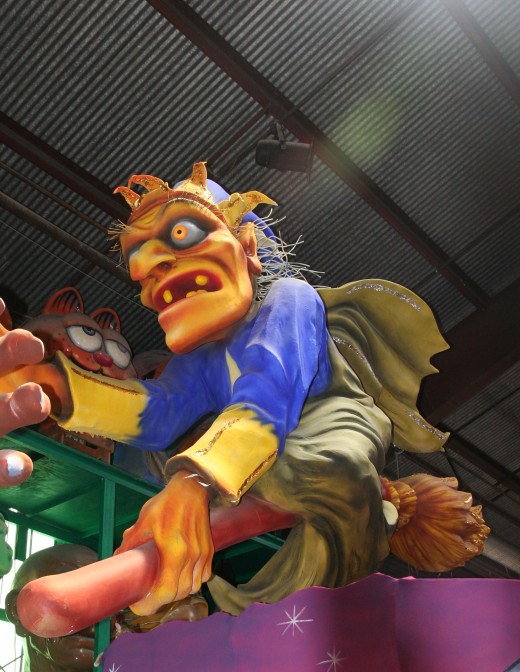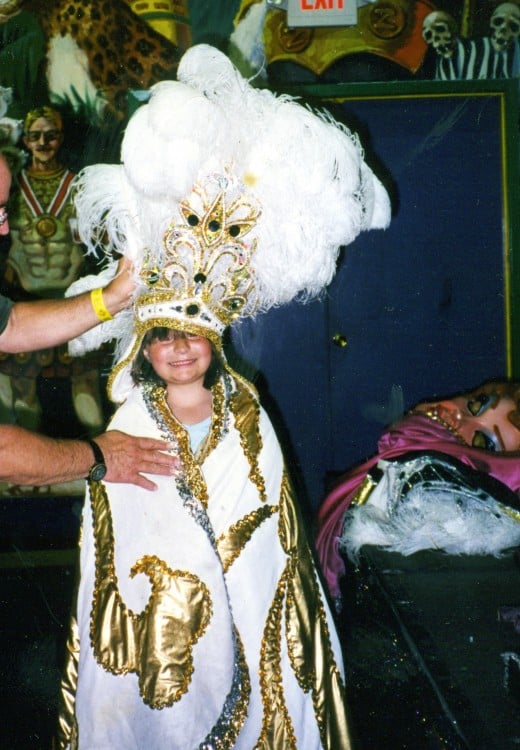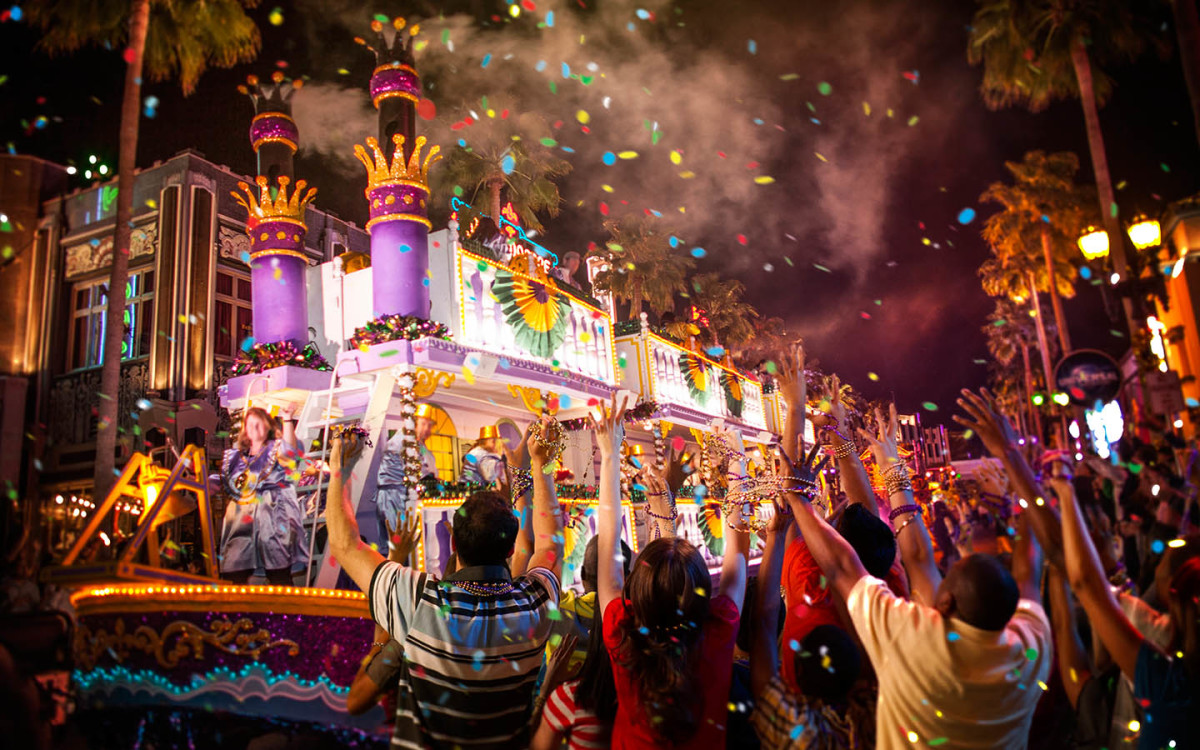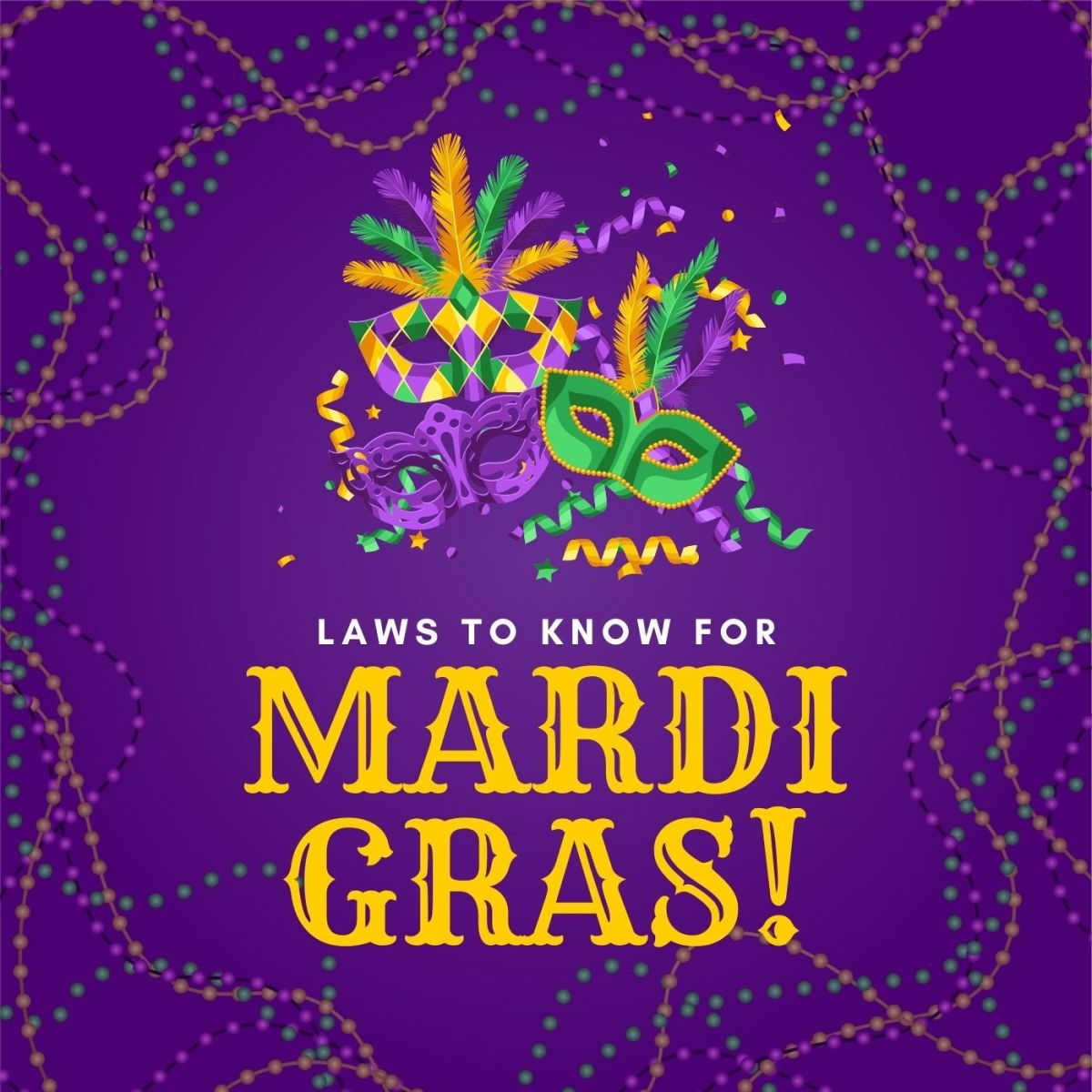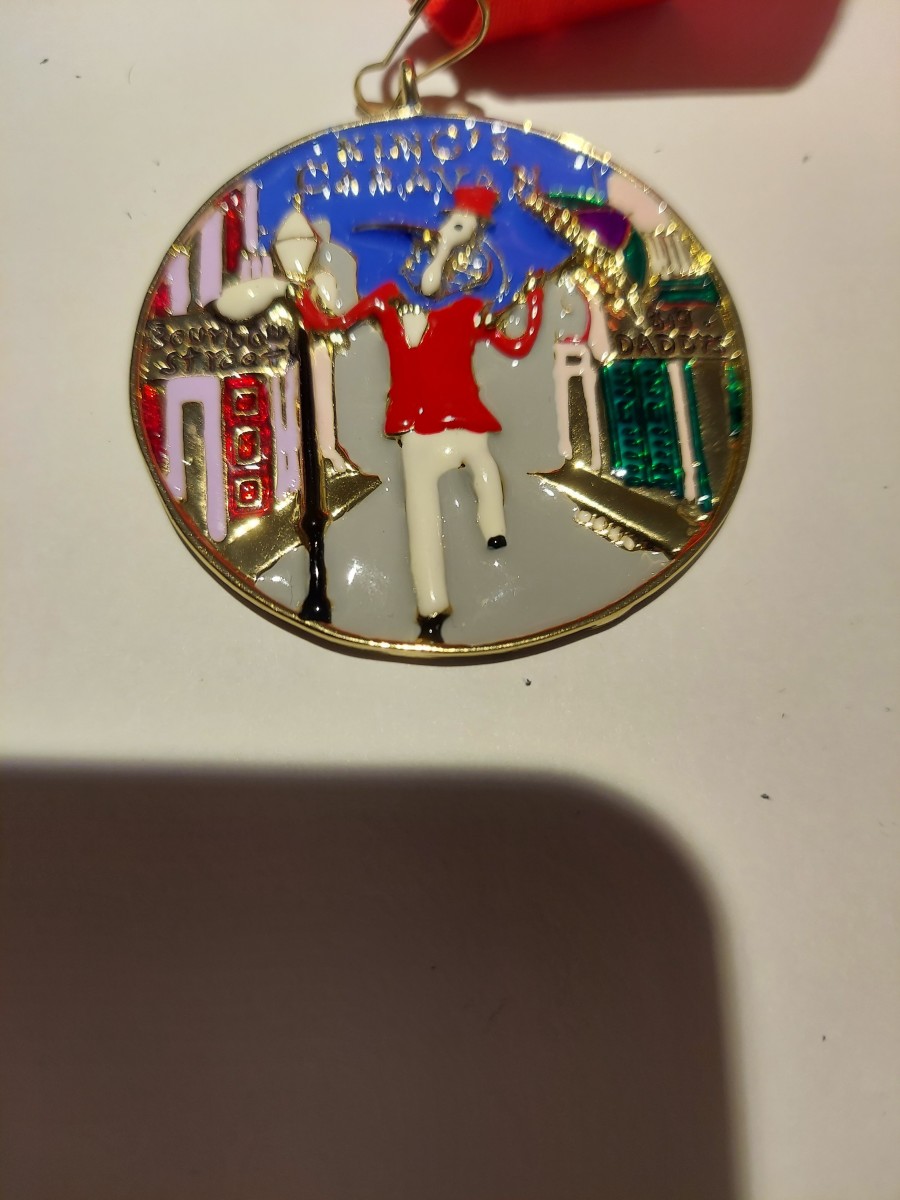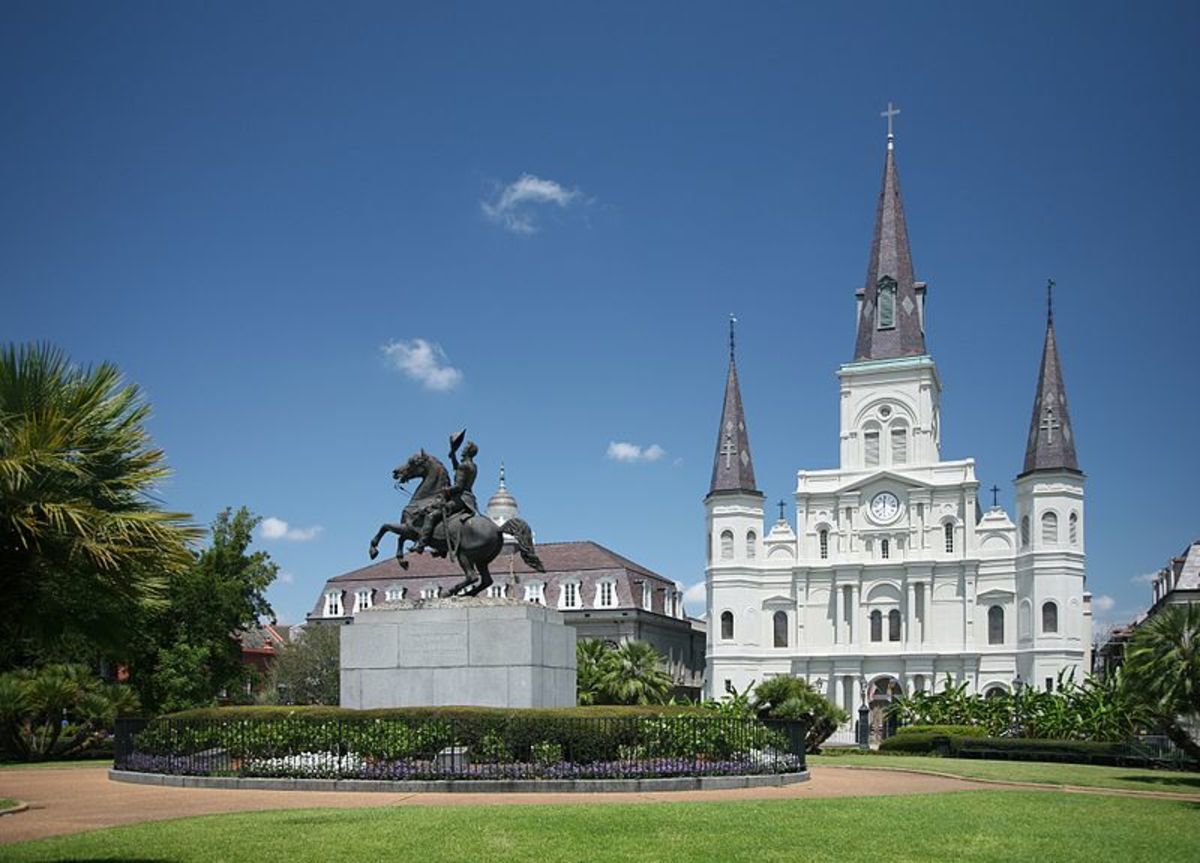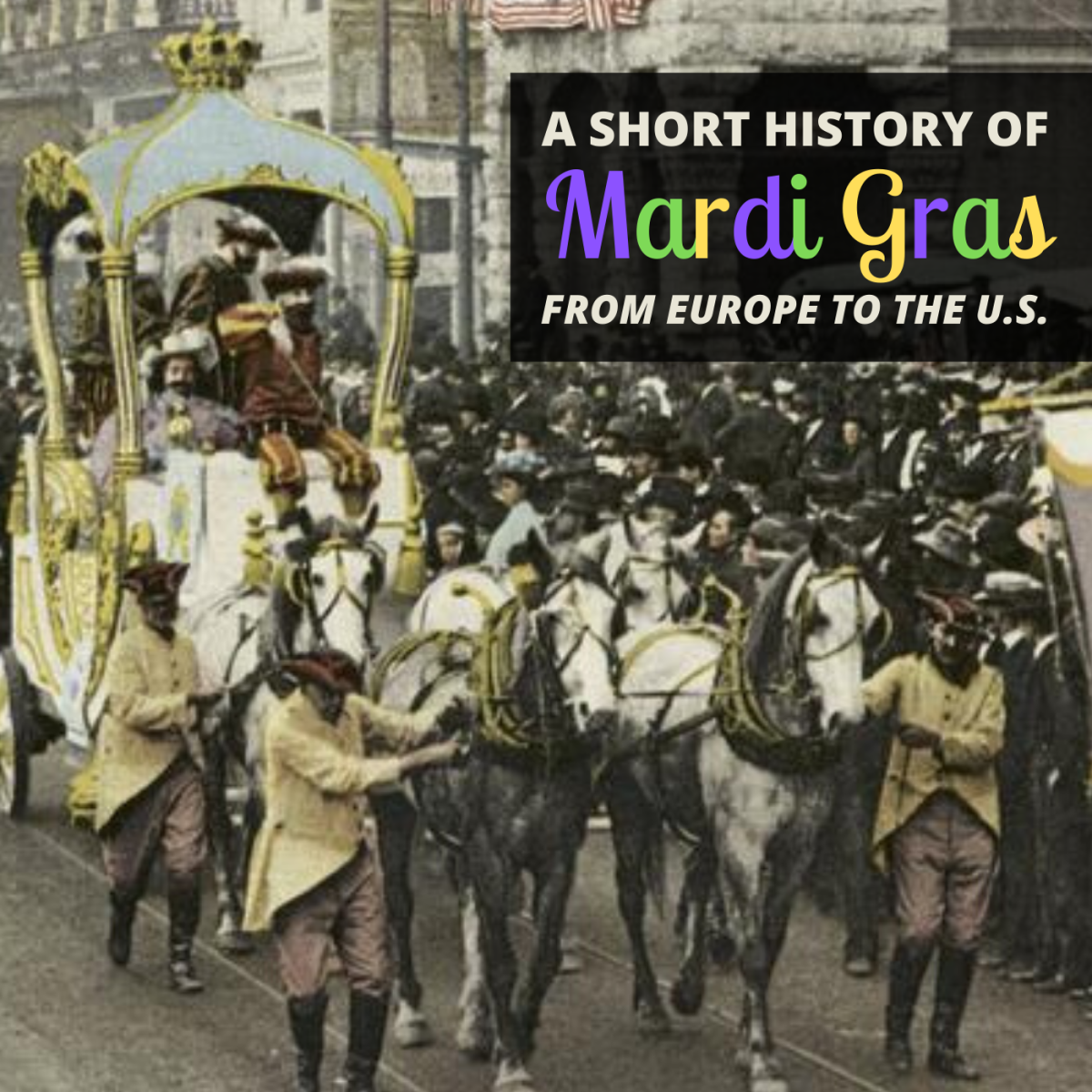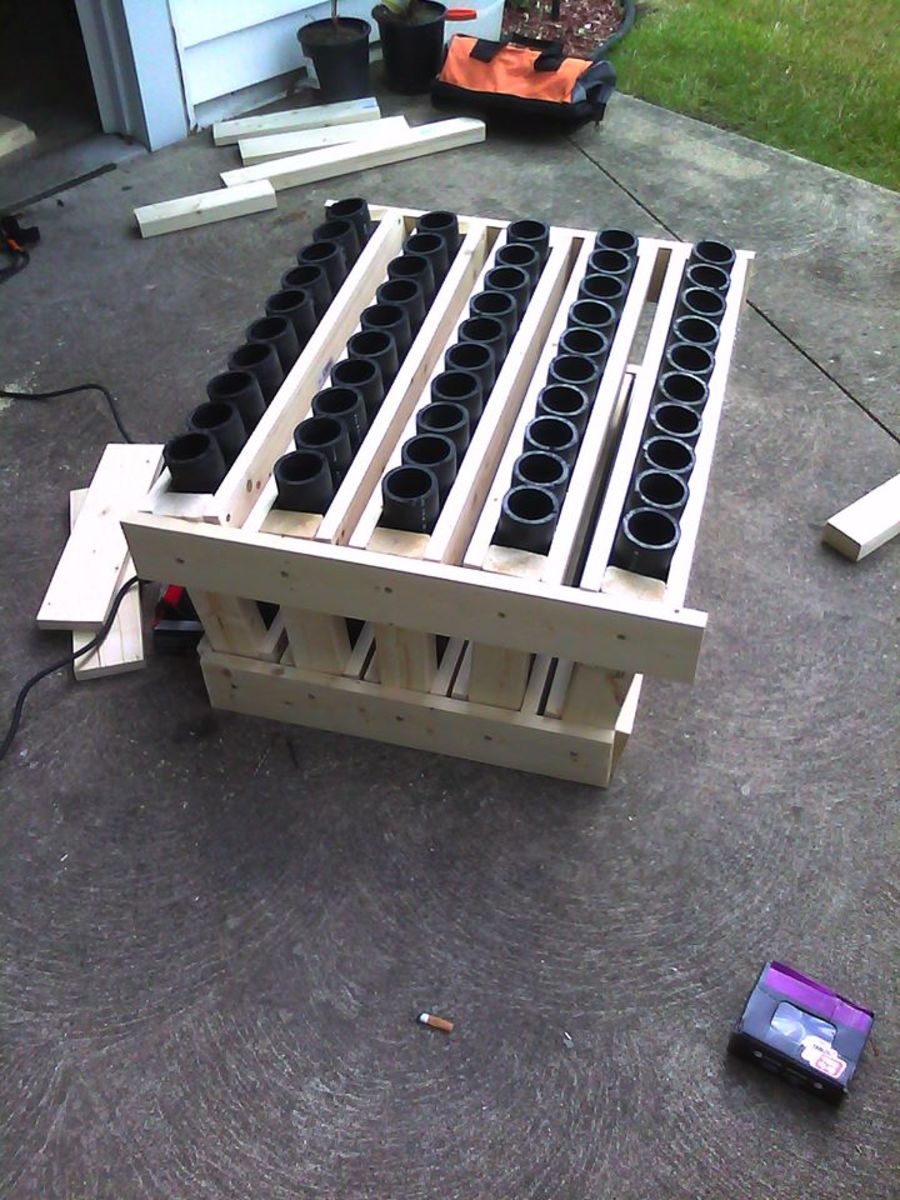Visiting New Orleans' Mardi Gras World
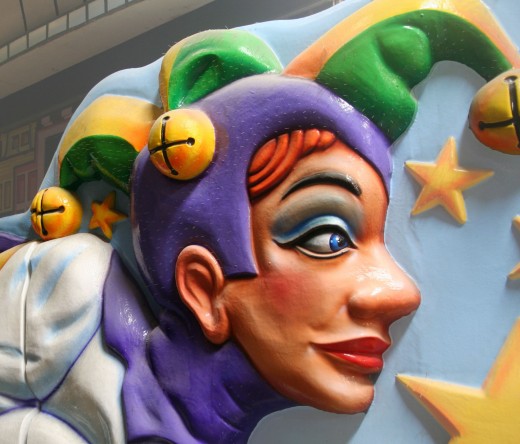
Ever wonder how Mardi Gras is made?
Of the many reasons visitors come for Mardi Gras, wanting to see those amazing floats has to be #1!
An entire year's worth of work is required before a single float can roll or a band can high step down St. Charles; the organization required is nothing short of staggering.
Did you know there's a place you can go-- at any time of year-- and see the whole process from the inside? That's Mardi Gras World, where you can go behind the scenes as their artisans design and build the Carnival floats!
(all photos taken/owned by the author)
The Carnival Merry-Go-Round
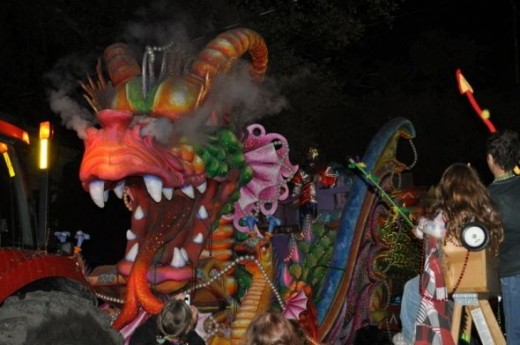
As soon as one cycle's done, it's time for the next...
The week after Mardi Gras, preparations for next year begins.
Each of the dozens of parading clubs (or Krewes, as they’re called locally) starts by having internal meetings and deciding what next year’s theme is going to be, because every float will evolve around that central idea.
There are three ways the Krewes can go:
- Stick with the Standards- a few groups use the same designs every year. Unless they add a new float repairs are the only work that needs to be done. (Caveat: no matter what their annual theme is, all Krewes have several ‘signature’ floats that never change. These are typically symbols for their club- The Muses shoe float, for example)
- Choose a universal theme- most krewes go this route. They might choose something about the States, for example, or popular movie stars, or other cultural icons. These floats can be spectacular, but because the symbolism behind them are unlikely to change, Krewes & artists can get right to work.
- Live on the edge with current events- a few of the most daring Krewes go with politics, current events and commentary. These tend to be edgy, satirical and the locals’ favorite parades, but they have a lot less time to plan: what’s funny and current right now will be old and stale by next year.
Then Come the Sketches
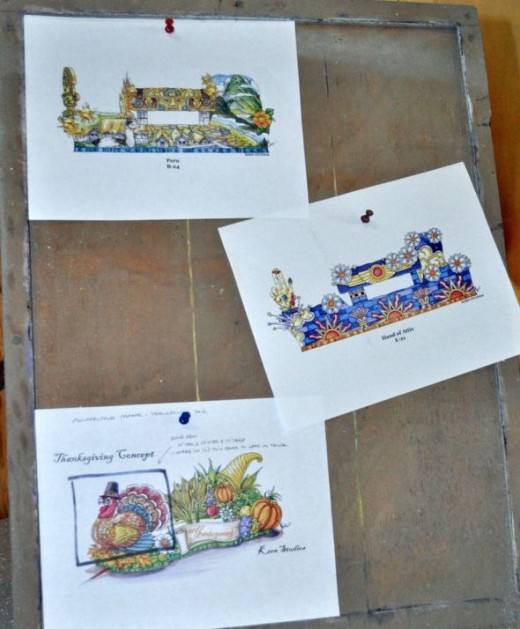
Once the Krewe gives Mardi Gras World their theme, the artists start brainstorming, submitting ideas and sketches for potential floats. After much back-and-forthing to make sure it’s just right, the sketches go out to the workshop.
This is the process point where visitors to Mardi Gras World can see the preparations in action.
When you arrive, you can first walk around the gift shop and mini-museum of Mardi Gras costumes and artifacts before watching a short movie about Mardi Gras, its history, and what it means to the city.
Then you’re given a guided tour through the work areas, and can watch the work going on first hand.
The process begins
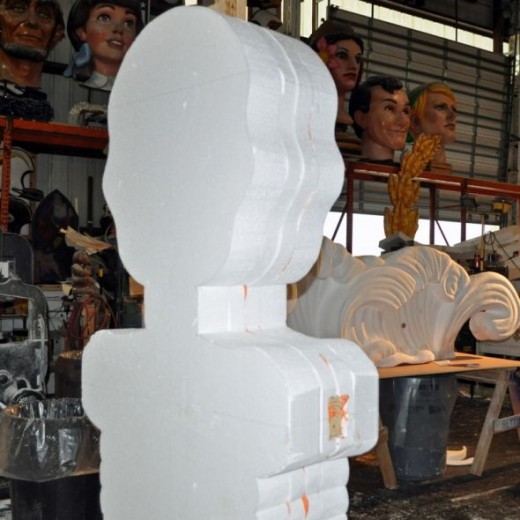
For the main forms that appear (typically on the very front and back of a float), the process is the most intense.
The artists first glue together many sheets of styrofoam, and then rough carve it down to an approximation of the shape they want.
A closer look
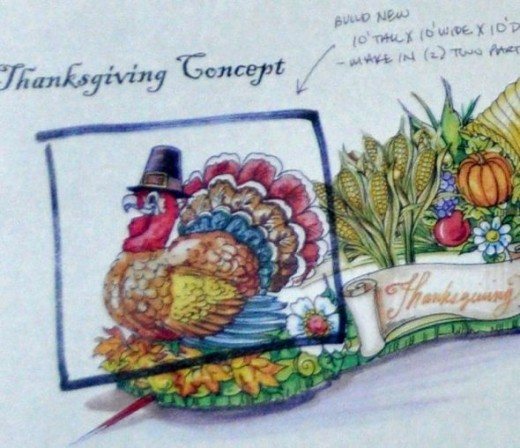
Here’s a closeup of the turkey drawing.
The artists have made notes about size (this guy's going to be 10 feet tall!) and instructions on the side, and this drawing will follow the turkey through the whole process.
They’ve noted they need to “build new” because before creating something from scratch, they check around the shop to see if there’s something they can modify and reuse, which saves time and the Krewe money.
Tom Turkey's head
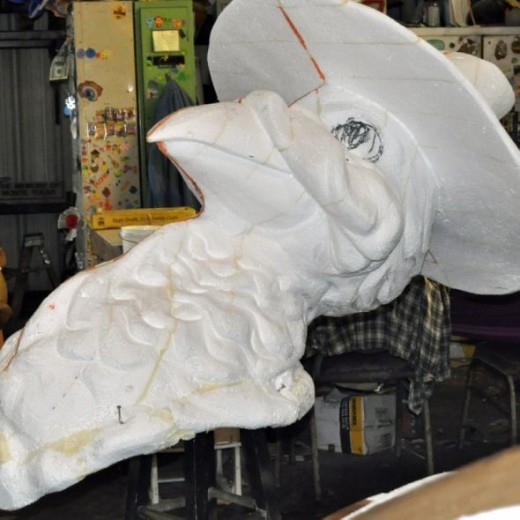
Here’s the head portion of the turkey before it’s covered in paper mache. You can clearly see the lines where the styrofoam was glued together.
As someone who was trapped into working (badly) with styrofoam for school projects, that they can get this done so smoothly just amazes me to no end!
Then comes the paper mache
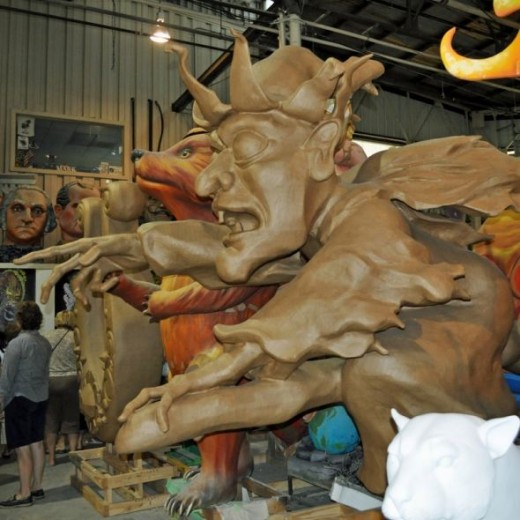
This is the banshee, a Mardi Gras staple. She appears in the Krewe of Boo every year and must’ve been damaged, so they repaired and rebuilt her.
Paint brings it to life
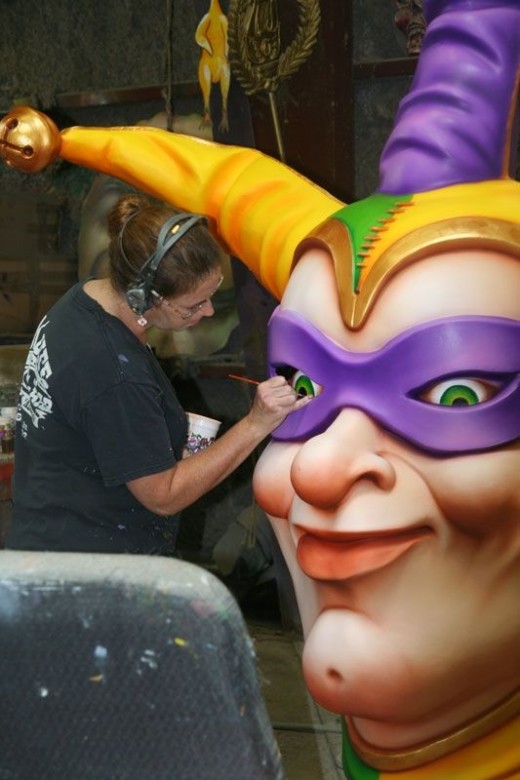
The main colors are airbrushed in, but the details all have to be done by hand.
Most of the artists wear noise cancelling headphones so they can concentrate with people wandering through, “oohing” & “ahhing” all day long!
Disclaimer: I have clown “issues,” so this guy freaks me out a bit. Even though I can appreciate the craftsmanship in what she’s doing I’m not sure the jester won’t be visiting me in a nightmare!
The rest of the float gets a makeover, too

The Krewes own the trucks that act as the float platform. Typically canvas is stretched over the frame, airbrushed and the details added.
The floats are kept lined up in the Krewe’s “den” until it’s time for them to roll out. Depending on their philosophy, some Krewes don’t mind the public seeing their theme before their parade, but some clubs keep them top secret until the very last second.
This Krewe’s theme was the French Quarter- you can see a Cafe du Monde waiter, the cemeteries, restaurants and more- all ready to hold hundreds of riders with thousands of throws!










A video tour
The video you see when you enter Mardi Gras world focuses on the action of Mardi Gras day, but isn’t available online. However, here’s a walking tour through the workshop with Travel Pulse.
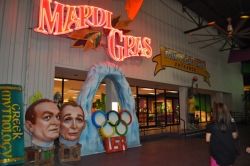
Are you ready to visit?
Located just outside the French Quarter, just beyond the Convention Center, Mardi Gras World offers a free shuttle to bring you back and forth- call 504-383-7987 for information and a pick up.
Also, be sure to check with your hotel or free magazines available throughout the city- you can often find coupons for reduced admission prices.
Tours run every half hour 7 days a week, 9:30-5:30 with the guided portion lasting an hour, though you’re welcome to wander through the shop on your own afterward. They’re only closed 4 days a year: Christmas, Thanksgiving, Easter…and Mardi Gras, of course!
I’ve gone many times with visitors, and it’s never the same place twice- you never know what you’ll find, but particularly if you’re visiting when no parades are happening, it’s worth a visit.
Besides, once you see what you’re missing, you know you’ll be back!

